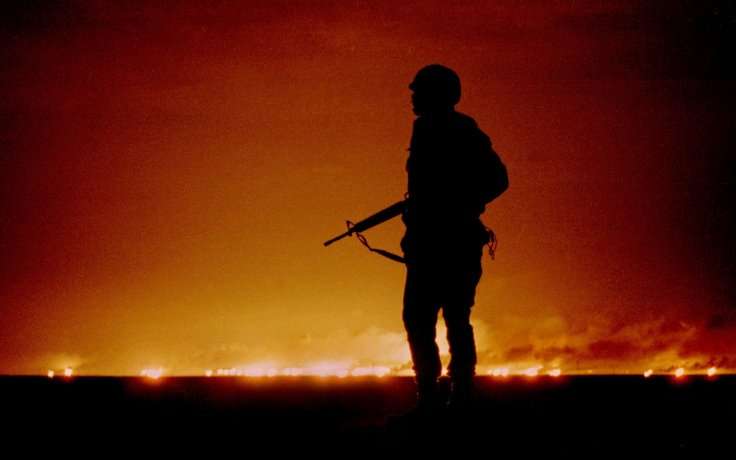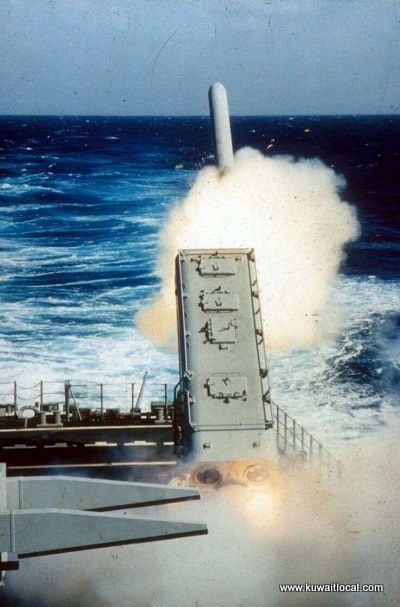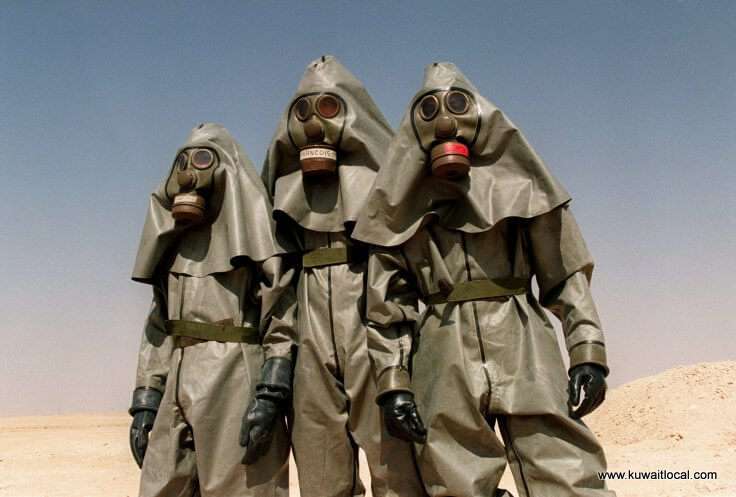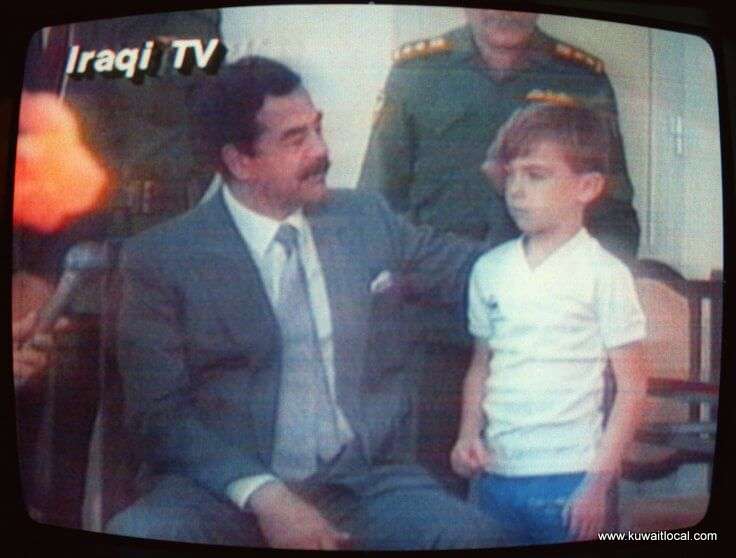Latest News
- Kuwait-Jordan Durra Field Joint Statement Rejected By Iran
- GTD Cracks Down On Vehicle Noise Pollution In Sulaibiya
- Mystery Of Dead Fish At Shuwaikh Beach Sparks Urgent Action
- MEW To Complete Links With The Interior And Justice Ministries B...
- 8 Expats Jailed For Bribing An Officer To Obtain Driver's Licens...
- Weekend Weather Is Expected To Be Hot
- From Tomorrow, Traffic Diversion On Third Ring Road
- Ministry Of Health Refute Rumors On Non-availability Of Antibiot...
- Amir Of Kuwait And Jordan King Renew Commitment To Regional Secu...
- 37 Arrested With Narcotics And Firearms
- Outrage Over Candidate's Arrest
- Six Stores Shut Down In Jahra For Selling Fake Goods
Kuwait Marks 25th Anniversary Of 1990-91 Iraqi Invasion

It is 25 years since the start of the First Gulf War, when a coalition of allies, led by the US, fought the Iraqi army after it invaded Kuwait.
The brutal Iraqi dictator Saddam Hussein accused the Kuwaitis of suppressing the price of oil by producing more than they were declaring, which in turn hurt the oil-dependent Iraqi economy.
After a war of words between Saddam and the Kuwaitis, he ordered 100,000 of his army − fresh from a bitter decade-long conflict with Iran in which a million were killed − over the border on 2 August.
As the Soviet-manufactured Iraqi tanks rolled in, the Kuwaiti royal family fled, leaving hundreds of thousands of ordinary citizens to face the onslaught. Many were displaced or murdered, others were abducted and tortured. Kuwaiti property was looted.

Days later, a coalition of forces led by the US mounted their response. The Americans, under the name Operation Desert Shield, set up a massive base in Saudi Arabia from which they later launched air strikes. American warships in the Persian Gulf would also launch cruise missiles at Iraqi targets.
Saddam was given an ultimatum by the coalition, which also included France, Britain, Saudi Arabia and Egypt: leave Kuwait or be driven out by military force. Saddam declared Kuwait a new province of Iraq.

In the war that followed, codenamed Operation Desert Storm, the far-superior firepower, hardware and training of the coalition forces rolled over the poorly-equipped Iraqi army. Saddam held foreign nationals in Iraq hostage, including Britons and Americans. As well as invading Kuwait, he sent troops over the Saudi border and fired Scud missiles at Tel Aviv, Israel.
One of the worst incidents of the conflict happened at the hands of the coalition, which had mistakenly identified a civilian shelter in Amiriyah, Baghdad, as a command bunker. The American air strike that hit it killed over 400 civilians in an instant, including many children.
As the Iraqi army retreated through Kuwait, it set fire to the oil fields, causing billions of pounds worth of damage and sending plumes of toxic smoke into the atmosphere that caused environmental havoc.
Another feature of the war was the use of American-made shells that contained depleted uranium. For years afterwards, soldiers and civilians exposed to the shells after they exploded were poisoned and suffered numerous health difficulties, while many children born close to bomb sites suffering birth defects.

By 3 March 1991 Iraq had been forced into surrender and accepted the terms of a UN Security Council ceasefire.
"There are no official figures for the Iraqi military operation," according to the Encyclopedia Britannica. "Estimates of the number of Iraqi troops in the Kuwait theatre range from 180,000 to 630,000, and estimates of Iraqi military deaths range from 8,000 to 100,000. The allies, by contrast, lost about 300 troops in the conflict."

The coalition forces did not march on Baghdad to remove Saddam, who went on to crush an uprising against him during the war by Kurdish rebels in the north of Iraq − the same people he had unleashed chemical weapons on a few years before at Halabja.
It was this decision not to topple Saddam there-and-then by backing the Kurdish rebels that arguably led to the Second Gulf War in 2003 and the chain of events that have followed, such as the multiple political crises that precipitated the rise of Islamic State.
Source- IB Times
Trending News
-
 Kuwait Implements Home Biometrics Services Ahead O...
14 April 2024
Kuwait Implements Home Biometrics Services Ahead O...
14 April 2024 -
 Kuwait Airways Provides Update On Flight Schedule...
14 April 2024
Kuwait Airways Provides Update On Flight Schedule...
14 April 2024 -
 Kuwait Airways Introduces Convenient Home Luggage...
15 April 2024
Kuwait Airways Introduces Convenient Home Luggage...
15 April 2024 -
 Expat Residency Law Amended By Kuwait Ministerial...
20 April 2024
Expat Residency Law Amended By Kuwait Ministerial...
20 April 2024 -
 Two Expats Are Arrested For Stealing From Salmiya...
17 April 2024
Two Expats Are Arrested For Stealing From Salmiya...
17 April 2024 -
 An Egyptian Expat Dies At Kuwait's Airport
11 April 2024
An Egyptian Expat Dies At Kuwait's Airport
11 April 2024 -
 Kuwait Airways Resumes Flights To Beirut And Oman...
15 April 2024
Kuwait Airways Resumes Flights To Beirut And Oman...
15 April 2024 -
 Bay Zero Water Park Kuwait: Summer Season Opens Ei...
11 April 2024
Bay Zero Water Park Kuwait: Summer Season Opens Ei...
11 April 2024 -
 Temperature Increases Cause Electricity Load Index...
21 April 2024
Temperature Increases Cause Electricity Load Index...
21 April 2024 -
 Thief Returns Stolen Money With An Apology Letter...
15 April 2024
Thief Returns Stolen Money With An Apology Letter...
15 April 2024












Comments Post Comment